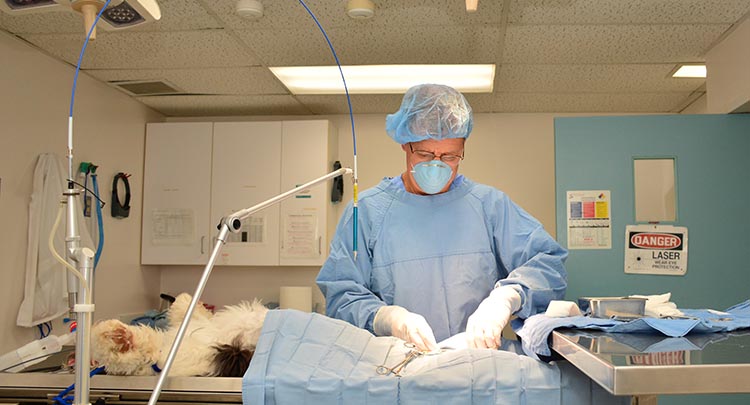Understanding the Importance of Pets Hospitalization and Surgery

As devoted pet owners, we strive to provide our furry companions with the best possible care and attention. However, despite our best efforts, there may be situations where our pets require more extensive medical treatment, such as hospitalization and surgery. In this comprehensive guide, we will delve into the significance of pets hospitalization and surgery, their role in veterinary medicine, and how they contribute to the overall well-being of our beloved animals.
The Need for Pets Hospitalization
Hospitalization for pets is a critical aspect of veterinary care, especially in cases where their health condition requires close monitoring, intensive treatment, or recovery from a medical procedure. Here are some key reasons why pets may need to be hospitalized:
1. Severe Illness or Injury
Pets suffering from severe illnesses or injuries may require hospitalization to receive immediate medical attention and intensive care.
2. Post-Surgery Recovery
After undergoing surgical procedures, pets may need to stay at the veterinary hospital to ensure proper healing and manage any post-operative complications.
3. Intravenous Fluid Therapy
Hospitalization allows veterinarians to administer intravenous (IV) fluid therapy to pets with dehydration or those unable to take fluids orally.
4. Diagnostics and Monitoring
In some cases, pets may need to be hospitalized for diagnostic testing, observation, and monitoring of their health condition.
5. Isolation and Contagious Diseases
Pets with contagious diseases may need to be hospitalized to prevent the spread of the illness to other animals or humans.
Uncommon Terminology: Veterinary Hospitalization Ward
A veterinary hospitalization ward is a specialized area within a veterinary hospital where hospitalized pets receive care and medical attention. This ward is equipped with facilities to monitor and support pets during their stay.
Understanding Pet Surgery
Pet surgery is a specialized field in veterinary medicine that involves performing surgical procedures to diagnose, treat, or correct various health conditions. Here are some common types of pet surgeries:
1. Soft Tissue Surgery
Soft tissue surgery involves operating on internal organs, such as the gastrointestinal tract, respiratory system, and reproductive organs.
2. Orthopedic Surgery
Orthopedic surgery focuses on treating musculoskeletal issues, including bone fractures, joint problems, and ligament tears.
3. Dental Surgery
Dental surgery addresses dental health issues, such as tooth extraction, oral tumors, and corrective jaw surgery.
4. Emergency Surgery
Emergency surgeries are performed to save a pet’s life in critical situations, such as trauma or life-threatening conditions.
The Role of Surgery in Pet Care
Pet surgery plays a crucial role in improving the quality of life and overall health of our animal companions. Here’s why pet surgery is important:
1. Treatment of Medical Conditions
Surgery is often the most effective treatment option for certain medical conditions that cannot be managed with medication alone.
2. Pain Relief and Improved Mobility
Orthopedic surgeries can alleviate pain, enhance mobility, and improve the overall comfort of pets with musculoskeletal issues.
3. Diagnosis and Biopsy
Surgical procedures may be necessary to obtain tissue samples for diagnosis and biopsy of tumors or suspicious growths.
4. Spaying and Neutering
Spaying and neutering surgeries not only prevent unwanted litters but also contribute to the long-term health of pets.
The Recovery Process
The recovery process after pet surgery is a critical period that requires careful attention and follow-up care. Here are some essential aspects of the recovery process:
1. Post-Operative Monitoring
Veterinarians closely monitor pets after surgery to ensure they are recovering well and to detect any potential complications early.
2. Pain Management
Proper pain management is essential to keep pets comfortable during the recovery period.
3. Follow-Up Visits
Follow-up visits with the veterinarian are scheduled to assess the healing progress and make any necessary adjustments to the treatment plan.
4. Restricted Activity
Pets may need to limit their activity and movement during the recovery phase to avoid strain on surgical sites.
Conclusion
Pets hospitalization and surgery are vital aspects of veterinary care that contribute to the health and well-being of our furry companions. Whether it’s providing intensive care during illnesses or performing surgical procedures to improve their quality of life, these medical interventions play a significant role in keeping our pets healthy and happy. As responsible pet owners, it is essential to work closely with our veterinarians, follow their advice, and provide our pets with the care they need during hospitalization and post-surgery recovery. With proper medical attention and love, we can ensure that our beloved pets lead long, fulfilling lives.
